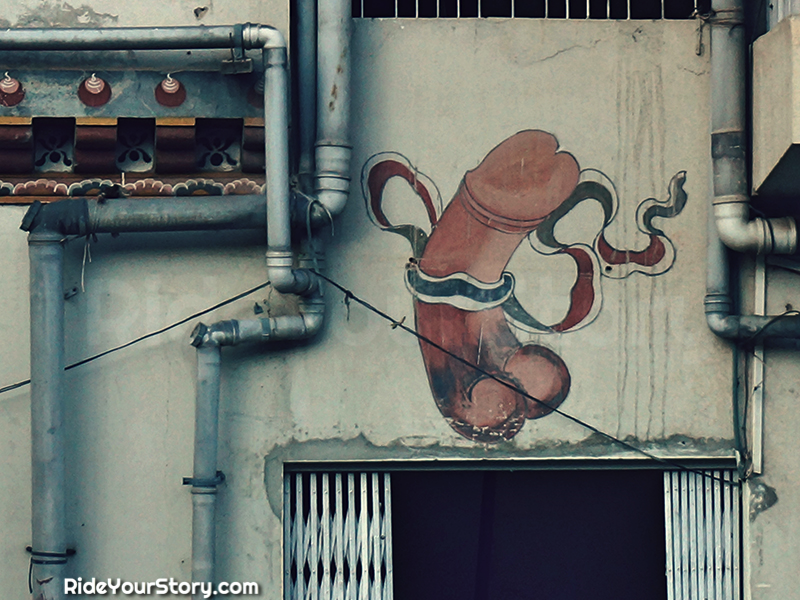There is something that you will never find in the tourism brochure of Bhutan. Not until your arrival, you simply cannot ignore as it is right in your face, filled for your attention in vibrant colours, various sizes. gestures and connotation.
The Phallus painting and sculpture of Bhutan.

Phallus painting above doorway 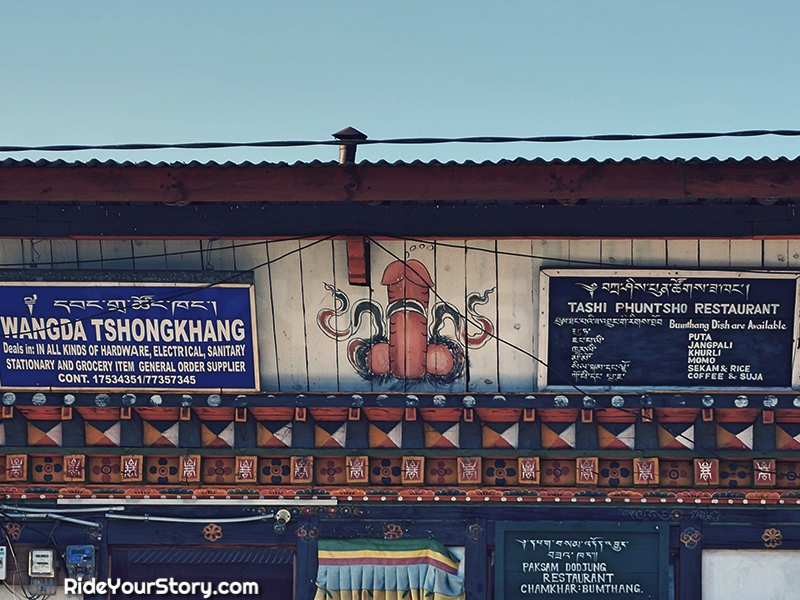
Phallus painting on wall 
Size does not matter! a keychain, necklace or just as a souvenir 
Perhaps the appropriate word to use here is ‘AND’ 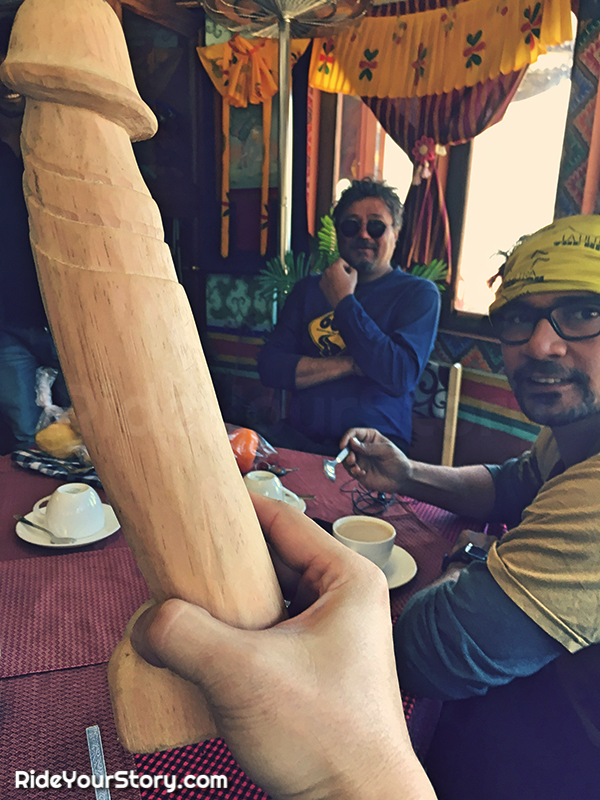
Just a regular lunch time chat topic
Acknowledgement : An excellent tour arranged by Ride of My Life
With no clear explanation from our guide to it’s origins, besides the initial shock, amusement value and the overused ‘drive away the evil spirits’ as a quick explanation to brush off further discussion. My curiosity set me off on a extensive research trip, and flipping through historical data to uncover the history and mysteries surrounding this ancient practice … all on Google. And to summarize it below in a few sentence, since a picture can speaks a thousand more words than I can explain it, while pretending to be a culture expert.
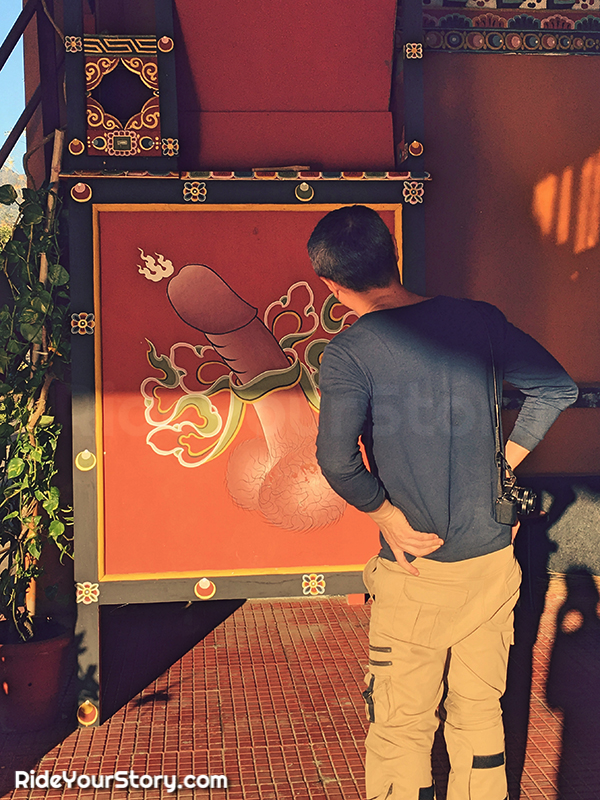
Drukpa Kunley, a eccentric Tibetan saint arrived in Bhutan in 15th century. With an unorthodox ways of explaining the Buddha’s teachings to laypeople, in his own way and in his fond of indulgence in sex, party and alcohol. His intentions was to shock the clergy then, whom he find uppity and prudish in their behavior and in teachings of Buddhism. He is popularly known as the Divine Madman and call himself Madman from Kyishodruk. Even his own organ has a name, in painted form, it is called ‘Thunderbolt of Flaming wisdom’. So this is the lama that propagate the idea of phallus as a path to enlightenment.
10km away from Punakha is Chimi Lhakhang, a very modest Lhakhang for a lama with such a colourful life. There the original wooden symbol of phallus Kunley brought from Tibet is still being used, particularly in rituals to bless women begetting a children.
Though there are other sources that claims this practice originated from Bon religion, a religious practice that pre-date Buddhism in the region of present Tibet and Bhutan.
Regardless his influence on Bhutanese culture of the commoner are still felt today. Though these practise was largely shunned by the government especially in the urban areas. There is a recent call for a revival to un-shame and pride this cultural practice.
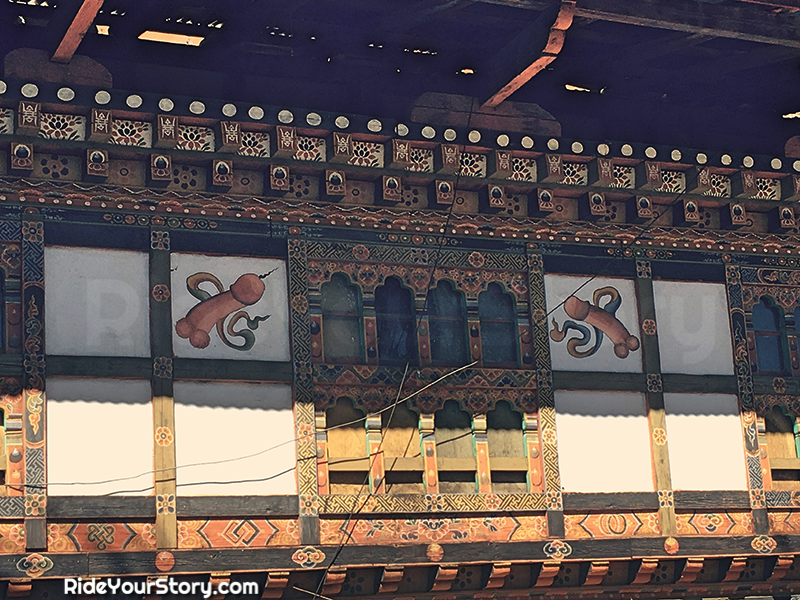
A pair of phallus, when one is not powerful enough 
Phallic sculpture guarding the corner of a wine shop 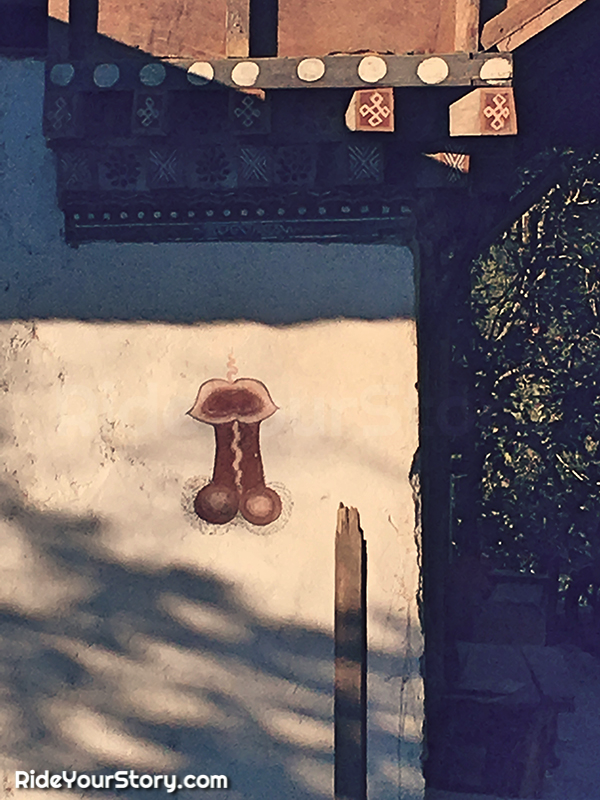
Phallic with a oral depiction painting next to entrance 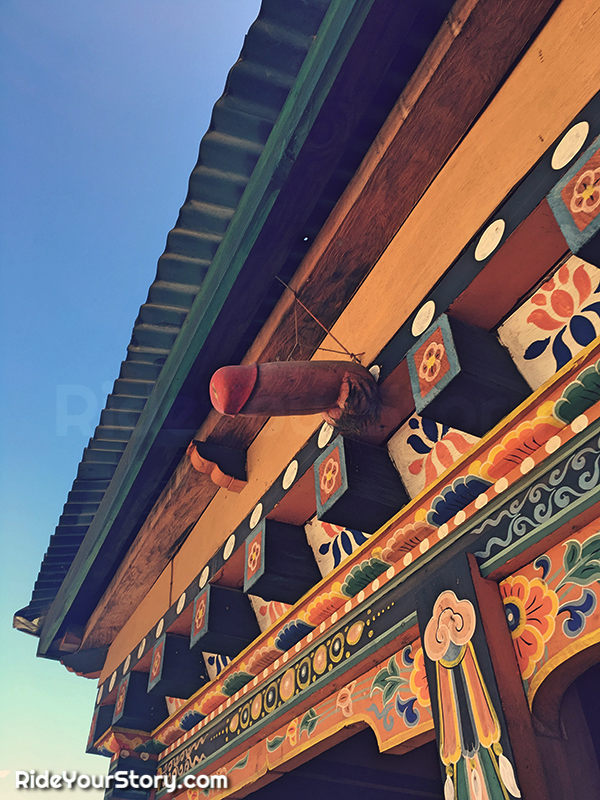
Phallic sculpture above entrance 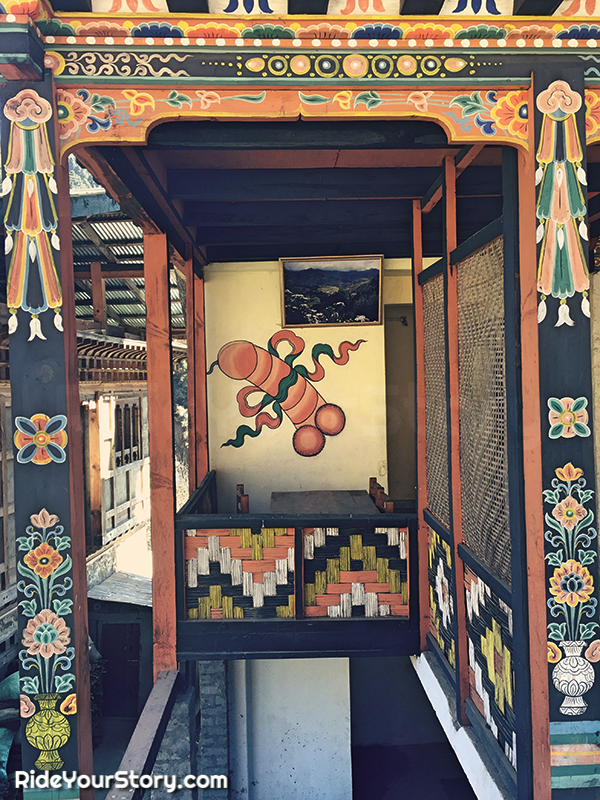
Phallic painting on stairway wall
Phallic worshipping or festival are not unique to Bhutanese culture either. They are also known to be celebrated in Japan, Korea, Mongolia, England, Iran, Greece, Thailand etc..
On the brighter note, especially for the feminist, you won’t find any scantily clad, suggestively posing women on billboards promoting commercial products in Bhutan.
What you get is … painted or sculpture penis pointed at you and greeting you at almost every doorway…(please don’t ‘Wow!’.. please!)
Fight for our rights then if you think this is degrading to men!
As unconventional as he is, his poem and songs are enlightening…
“The best wine lies at the bottom of the pail,
And Happiness lies below the navel”
And his song about the pleasure…
A young woman finds pleasure in love.
A young man finds pleasure in sex.
An old man finds pleasure in his memoirs.
This is the doctrine of the three pleasures.Who does no know the truth, is confused.
Those who have no goals, cannot sacrifice.
Those who have no courage, cannot be a Yogi.
This is the doctrine of the three missing things.Even if a person knows the way of wisdom;
without practising there is no realization.
Even if a master shows you the way,
you have to go it by yourself.

A phallus given a handy assistance. 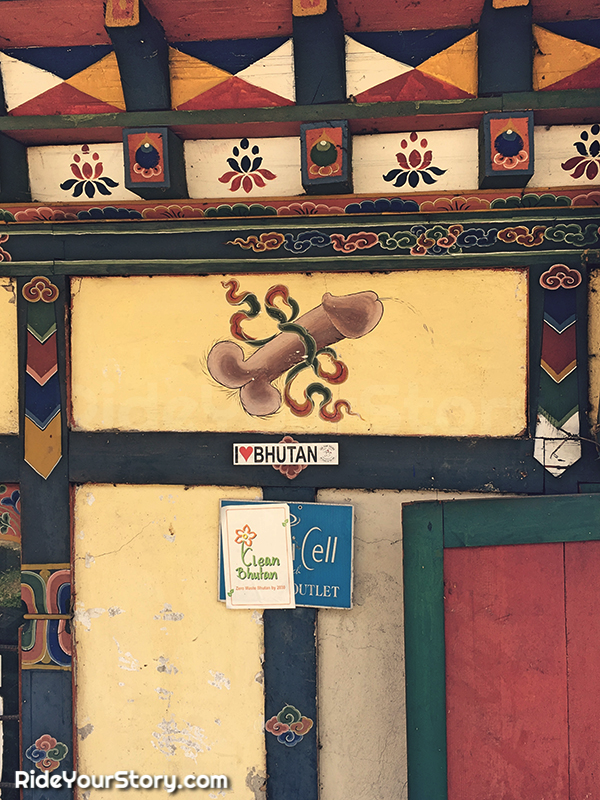
Phallus painting on wall 
Phallic painting beside every business signage
I practice the path of self-discipline. I meditate every day.
I go the way of embracing love. I work as a mother and father of all beings.
I do the deity yoga. I visualize myself as a Buddha in the cosmic unity.
I read the books of all religions and practice all at the right moment.
The life is my teacher and my inner wisdom is my guide
These could well be the wisdom that will unite all man (and woman) and save the world from the war-mongering religions that is plaguing the world right now and dividing the human race since recorded history…
